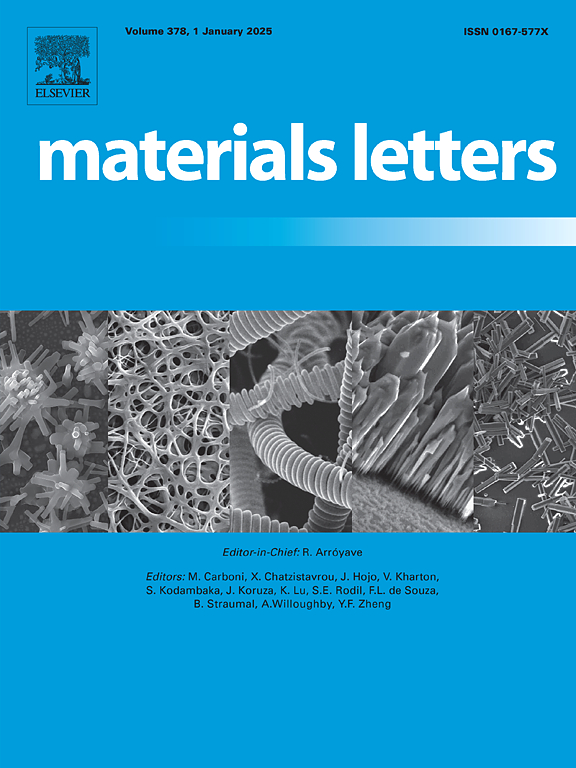Influence of strain rate on the tensile properties, misorientation distribution, and texture evolution of automotive-grade TRIP-assisted advanced high-strength steel
IF 2.7
4区 材料科学
Q3 MATERIALS SCIENCE, MULTIDISCIPLINARY
引用次数: 0
Abstract
This study investigates the influence of strain rate on the tensile properties, misorientation distribution, and texture evolution of annealed Fe-3.46Al-7.52Mn-0.92Si-0.22C (wt.%) steel. Tensile tests are performed on the annealed sample at room temperature with strain rates of 3.3 × 10-4 (SR-1), 1.65 × 10-3 (SR-2), and 3.3 × 10-3 s−1 (SR-3). At higher strain rates, a higher amount of austenite is retained and higher weighted average kernel average misorientation (KAM) is observed. SR-1 exhibits a superior ductility (40 %) compared to SR-2 and SR-3 (28 and 18 %, respectively) due to the combined effect of a higher amount of austenite (29.2 %) transformed to martensite, a higher fraction of low-angle grain boundaries, and strong Ms-brass {011} < 211 > texture. However, SR-2 and SR-3 show better tensile strength compared to SR-1 due to higher fraction of high-angle grain boundaries and evolution of higher intensity α-fiber RD // <110 > .
应变速率对汽车级 TRIP 辅助先进高强度钢的拉伸性能、错取向分布和纹理演变的影响
本研究探讨了应变速率对退火 Fe-3.46Al-7.52Mn-0.92Si-0.22C (wt.%) 钢的拉伸性能、错取向分布和纹理演变的影响。在室温下对退火样品进行拉伸试验,应变率分别为 3.3 × 10-4 (SR-1)、1.65 × 10-3 (SR-2) 和 3.3 × 10-3 s-1 (SR-3)。在较高的应变速率下,奥氏体的保留量更高,加权平均核平均错取向(KAM)也更高。与 SR-2 和 SR-3(分别为 28% 和 18%)相比,SR-1 表现出更高的延展性(40%),这是由于较多的奥氏体(29.2%)转变为马氏体、较高比例的低角度晶界以及较强的 Ms-brass {011} < 211 >纹理的综合影响。然而,与 SR-1 相比,SR-2 和 SR-3 的抗拉强度更高,这是因为高角度晶界的比例更高,且演化出强度更高的α纤维 RD // <110 > 。
本文章由计算机程序翻译,如有差异,请以英文原文为准。
求助全文
约1分钟内获得全文
求助全文
来源期刊

Materials Letters
工程技术-材料科学:综合
CiteScore
5.60
自引率
3.30%
发文量
1948
审稿时长
50 days
期刊介绍:
Materials Letters has an open access mirror journal Materials Letters: X, sharing the same aims and scope, editorial team, submission system and rigorous peer review.
Materials Letters is dedicated to publishing novel, cutting edge reports of broad interest to the materials community. The journal provides a forum for materials scientists and engineers, physicists, and chemists to rapidly communicate on the most important topics in the field of materials.
Contributions include, but are not limited to, a variety of topics such as:
• Materials - Metals and alloys, amorphous solids, ceramics, composites, polymers, semiconductors
• Applications - Structural, opto-electronic, magnetic, medical, MEMS, sensors, smart
• Characterization - Analytical, microscopy, scanning probes, nanoscopic, optical, electrical, magnetic, acoustic, spectroscopic, diffraction
• Novel Materials - Micro and nanostructures (nanowires, nanotubes, nanoparticles), nanocomposites, thin films, superlattices, quantum dots.
• Processing - Crystal growth, thin film processing, sol-gel processing, mechanical processing, assembly, nanocrystalline processing.
• Properties - Mechanical, magnetic, optical, electrical, ferroelectric, thermal, interfacial, transport, thermodynamic
• Synthesis - Quenching, solid state, solidification, solution synthesis, vapor deposition, high pressure, explosive
 求助内容:
求助内容: 应助结果提醒方式:
应助结果提醒方式:


